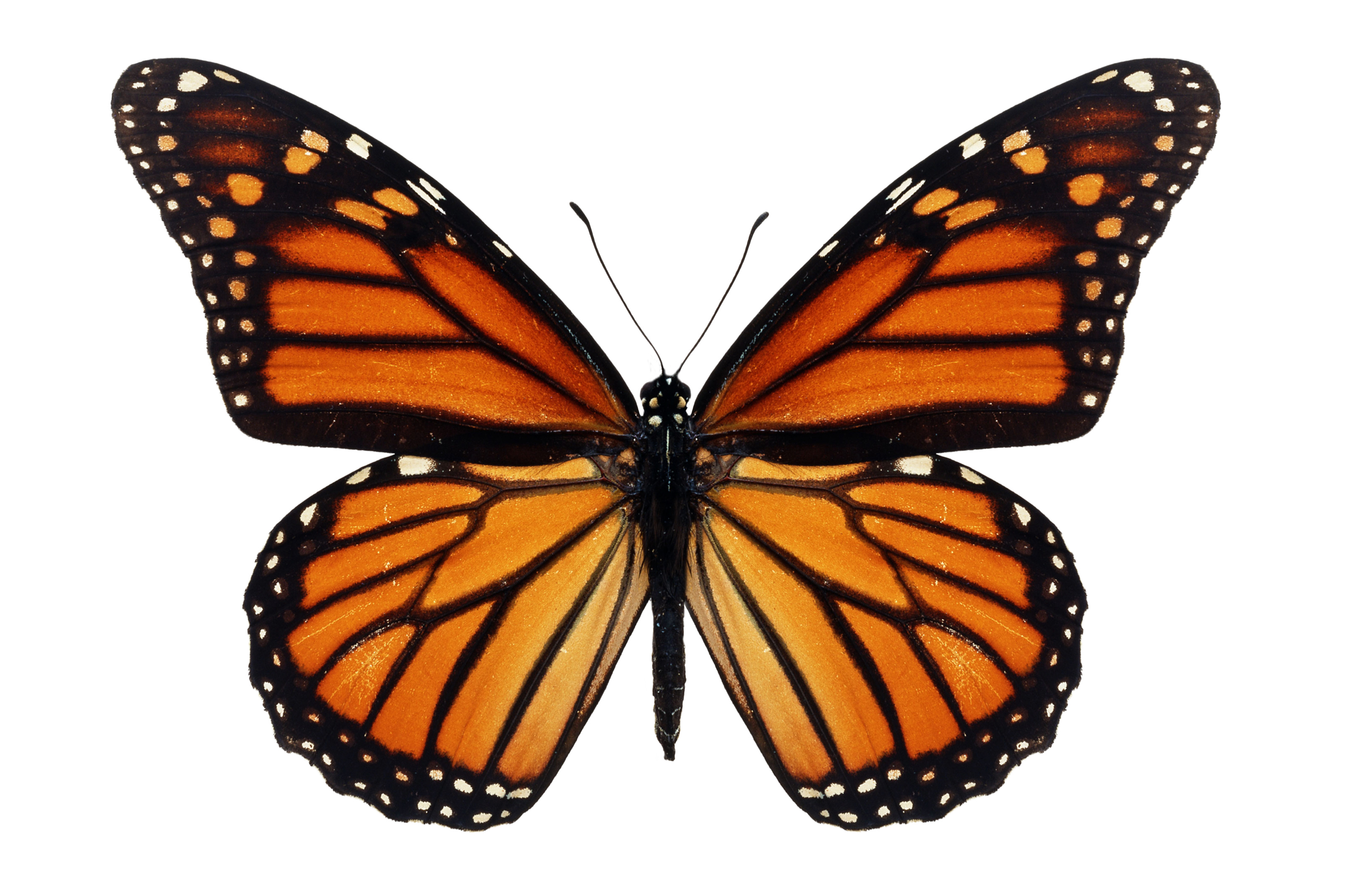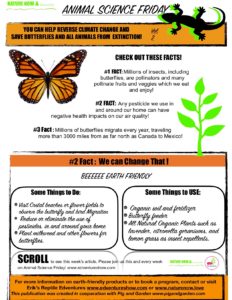ANIMAL SCIENCE FRIDAY vol 2
MONARCHS MIGRATION AND FACTS ABOUT THIS ROYAL WINGED INSECT
By Steve Fratello
The orange and black Monarch is the most famous of the approximately 800 species of butterflies found
in the United States. It is familiar to many because of its wide range, large size, bright color and bold pattern, as well as being quite common. The Monarch, with a wingspan of 3 and a half to 4 inches, is one of our largest butterflies. It is only surpassed in size by various species of swallowtail butterflies throughout its N. American range. Though predominantly orange and black, there are numerous white spots contained within the black wing margins. Although overall very similar in appearance, males and females are easy to distinguish: males possess a small black spot in the middle of the hind-wings which is lacking in the females, the black markings along the wing veins are thicker in females.
The scientific name of the Monarch is Danaus plexippus. It is one of two Milkweed Butterflies common in the U.S., the other being the Queen, which is a more southern species that is predominantly chocolate brown. The Milkweed Butterflies are mainly a tropical group; their larvae feed on various milkweed species or related plants. The toxins contained in the milkweed plants make the larvae and adults distasteful to predators. The warning colors of both larvae and adults advertise, “Don’t eat me! I taste bad!”
The Viceroy, in a somewhat closely related group of butterflies, looks like a smaller version of the Monarch. Long thought to simply be a mimic of the Monarch, the Viceroy is now thought to also be distasteful to birds. Besides being smaller than the Monarch, it bears a black line across the hind wings that is lacking in the Monarch.
Another noteworthy fact is that the Monarch is one of our few migratory butterflies. The Monarch migration is a grand phenomenon. In late summer and early fall, millions of Monarchs head south from as far north as southern Canada. Most of these migrants overwinter in a small area of mountains in Mexico, a journey for some of up to approximately 3,000 miles. Most of the Monarchs that live west of the Rocky Mountains migrate to overwintering sites along the coast of California. The Monarchs that overwinter in Mexico start to head north in February. It is not them but their offspring that reach the northern parts of their range. It is still not known how these butterflies, who never made the journey before, navigate to far distant places.
Like all Lepidoptera (the order of insects that includes butterflies and moths), Monarchs go through complete metamorphosis: egg, larva (caterpillar), pupa (chrysalis) and adult. In complete metamorphosis for insects, the immature larva and adult look very different; caterpillar and butterfly or moth. The Monarch caterpillar is striking with yellow, black and white stripes that are its bold warning colors; it also has a pair of fleshy tentacles on both ends. The Monarch has a very beautiful chrysalis, shiny green with gold ornaments.
Monarchs, like the majority of butterflies, feed on flower nectar with their straw-like proboscis. They visit many different kinds of flowers. The next time you see such a beautiful sight as a Monarch feeding from a lovely flower, also think, this is one very interesting butterfly!



Recent Comments